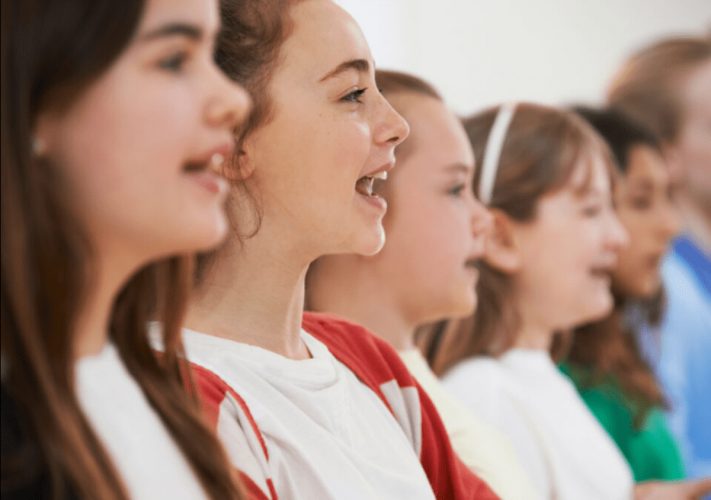There are several techniques that represent a highly significant literacy instruction method, as it helps teachers to develop their students’ ability in reading faster, which is an important aspect of understanding. One such effective and technical teaching method is ‘choral reading’ with which students with the help of teachers can enhance their communicative skills.
When used correctly, choral reading becomes a useful tool for improving fluency in both older and younger children; hence, this technique finds useful application in pre-kindergarten schools. The government authority of UAE, which is responsible for prescribing functional standards for educators, have identified the need for integrating such techniques even to elementary schools in UAE.
What is Choral Reading?
Choral reading is a technique that improves literacy, promotes fluency, confidence and interest in reading among students. In this practice, one student or group of students read the passage together either with or without a teacher. It can be done individually, in small groups or as an entire class. Being engaging to learners, choral reading makes them enjoy it hence encouraging even the poorest readers to take part lively.
The teacher’s involvement in the choral reading exercises would be an ideal opportunity for them to evaluate the collective reading level of the class. They should move around, listen closely to each learner as they participate; thus he or she can give timely support and guidance so that all students are actively involved and interpreting the text correctly.
Purpose
The main goal of choral reading is to help every reader reach and surpass fluency and comprehension goals. Choral reading assists learners to improve their fluency, which is an important part of becoming skilled readers. Reading fluency is a basic component of understanding that emphasises how fast and correctly pupils can say words in the right accent and tone as if in normal conversation.
Relevance And Importance
A pre kg school has a significant role to play in the development of early literacy. By encouraging choral reading this development is boosted efficiently. With children reciting together, they learn how to speak aloud as well as expand their knowledge of words and sounds. Choral reading also contributes to socialisation, teamwork and self-confidence among children while participating in group reading activities.
Choral reading improves listening skills and memory retention which are crucial for cognitive development at an early age. Furthermore, choral reading has a rhythm that is interesting to young learners and thus makes learning more fun and engaging for them.
Strategies For Appropriate Implementation
Incorporating choral reading into the classroom can be done in different ways with each having its own special advantage. The best approach for your class depends on what you want to achieve with your students. Being adept at this method’s selective use is necessary for any individual who wishes to provide several opportunities to support a wide range of readers
A simple yet highly effective strategy is to use language arts and choral reading together. This helps the following ways: fluency and comprehension of complex texts can be improved by engaging in Language Arts through choral reading. An effective way to teach elements like plot and sequencing later on is by starting with collective story readings.
Highly Effective For Struggling Readers
Choral reading can be an invaluable tool for struggling readers through targeted support in different ways. These include helping students who struggle with reading. Identify what areas of improvement they need to focus on—e.g., phonemic awareness, fluency, and comprehension.
Choral Reading – Types
There are many different ways to implement choral reading in the classroom, each with its own advantages. The specific needs of your learners determine which method is most appropriate.
1. Echo Reading:
A teacher reads a passage aloud and the class repeats it back like an echo.
2. Antiphonal Reading:
The whole class divides into two groups that take turns to read.
3. Dialogue Reading:
Different students get assigned roles in the text and they read their parts aloud.
4. Cumulative Choral Reading:
The entire class reads the text together aloud.
5. Impromptu Choral Reading:
A teacher reads aloud while students are invited to join in spontaneously but there is no obligation for them to do so; thus encouraging autonomy and choice
6. Performance Reading:
Before reading aloud as a performance, students receive a paragraph and practice it ahead of time. This instructional strategy builds confidence for weak readers before they read in public.
Choral reading plays an important role in teaching children how to read and write by giving them the opportunity for social interaction and confidence building from early ages till their graduation.
Elementary schools in UAE have put forth evidence that shows choral reading’s usefulness at such levels as those in Pre-K years. Owing to this fact about research findings made by educational boards in the country, integration of choral reading has been recommended as a way of promoting literacy among the young ones.
It is not surprising that choral reading has been considered as one of the fundamental ways to teach young children how to read. This is a good way to prepare them for their future learning; hence, education authorities recommend choral reading in pre-schools.

